 Database
Database
 Mysql Tutorial
Mysql Tutorial
 Detailed explanation of database MySQL Chinese garbled solution summary (pictures and texts)
Detailed explanation of database MySQL Chinese garbled solution summary (pictures and texts)
Detailed explanation of database MySQL Chinese garbled solution summary (pictures and texts)
This article mainly introduces the relevant information of the databaseMySQLThe solution to Chinese garbled characters is summarized. The database saves Chinese characters, so we often encounter database garbled characters. Here are several methods. Friends who need it can Refer to the following
MySQL Chinese garbled solution
Foreword:
MySQL is a very commonly used data database in our projects . But because we need to save Chinese characters in the database, we often encounter database garbled characters. Let’s introduce how to completely solve the problem of Chinese garbled characters in the database.
1, Chinese garbled code
1.1, Chinese garbled code
create table user(name varchar(11)); # 创建user表
insert into table user("carl"); # 添加数据
select * from user;
insert into user value("哈哈");Unable to insert Chinese characters:

1.2. Check table character encoding
mysql> show create table user \G;
*************************** 1. row ***************************
Table: user
Create Table: CREATE TABLE `user` (
`name` varchar(11) DEFAULT NULL
) ENGINE=InnoDB DEFAULT CHARSET=latin1
1 row in set (0.00 sec)We can see that the default character set of the table is latin1.
So we need to specify the table when we create it The character set:
create table user(name varchar(11)) default charset=utf8;
can be accessed in Linux and the table can be inserted and accessed.
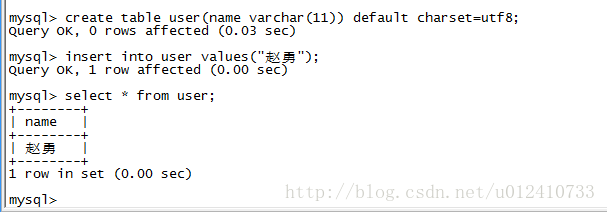
1.3. Database and operating system encoding
Although Chinese can be displayed normally on the server side, garbled characters may be displayed on the client side. Because our server is UTF8.
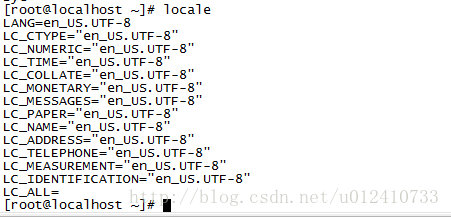
And there are also problems with the encoding of the database.
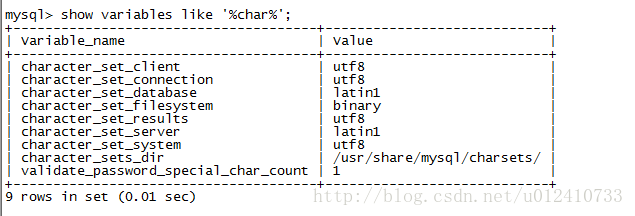
Here we can see that the character sets of character_sert_database and character_set_server are both latin1. Then in mysql database, the character sets of server, database and table are all The default is latin1. Let's take a look at how to solve the mysql garbled situation.
2. Mysql settingsThe scope of variables
2.1.sessionScope
View database encoding :
show variables like '%char%';
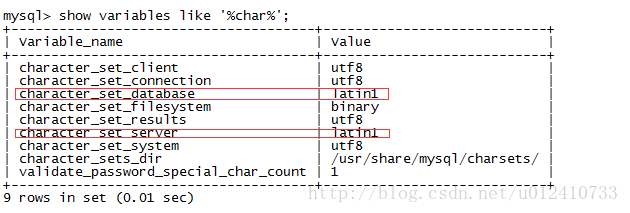
Modify character encoding:
set character_set_server=utf8; set character_set_database=utf8; show variables like '%char%';
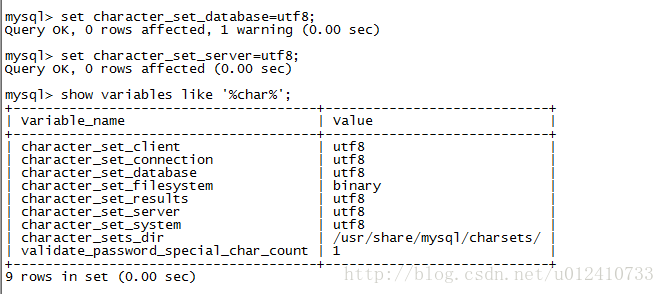
We can see that the character set has been modified to utf8. But there is a problem here, that is, if we reopen a command window and check the data encoding, the following screen will appear:
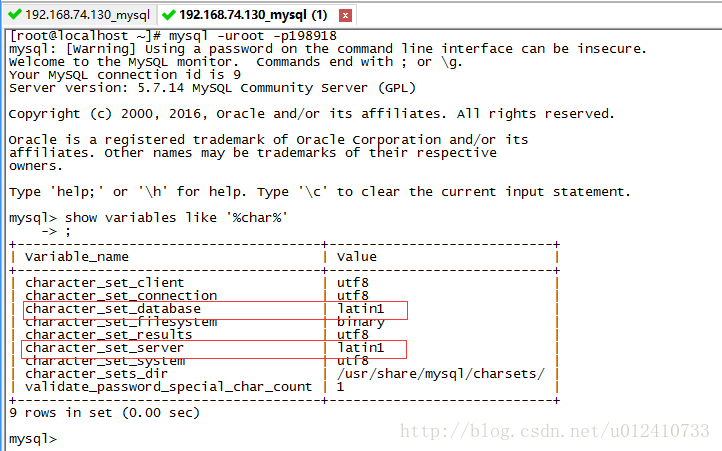
2.2, global range
The scope of mysql setting variables defaults to the session scope. If you set the character set of multiple sessions, you need to set the global scope: Set [global|session] variables...
set global character_set_database=utf8; set global character_set_server=utf8; show variables like '%char%';
When we view across sessionsmysql character setYou will see that they are all utf8. If you think everything is fine, you are totally wrong.
2.3. Set the global scope of data
When our database restarts, you find that the value of setting the global scope becomes latin1 again.
service mysqld restart mysql -uroot -pyourpassword show variables like '%char%';
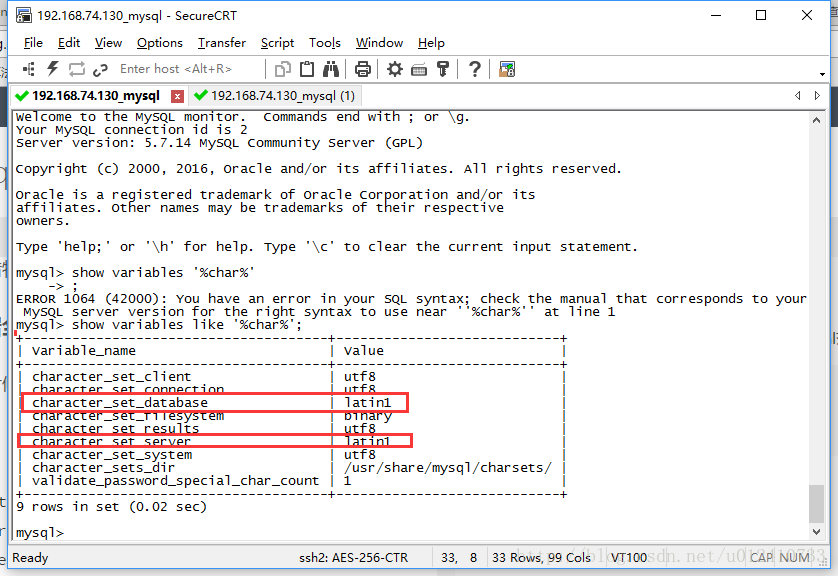
Don’t be afraid, the following will teach you the ultimate trick:
Modify mysqlConfiguration file/etc/my.cnf.
[mysqld] character-set-server=utf8 [client] default-character-set=utf8 [mysql] default-character-set=utf8
Please pay attention to the location of these parameter configurations, otherwise the mysql service may not be started:
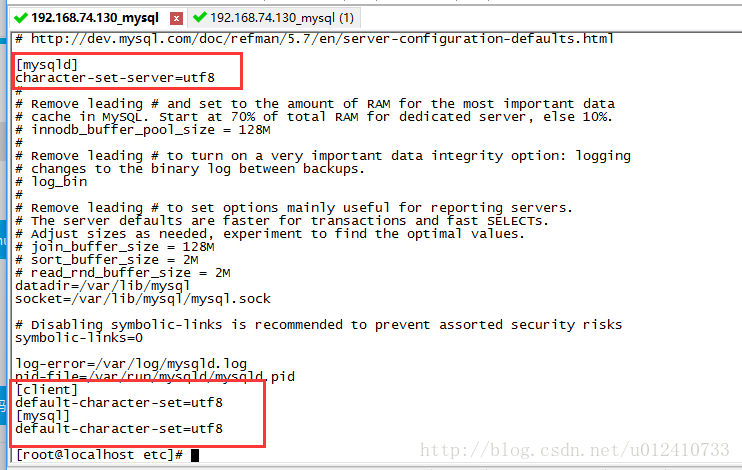
OK. Now if you restart the mysql service, you will also find that its character set is utf8.

And we do not need to specify the character encoding when creating the table, it defaults to utf8;
drop database test; create database test; use test; create table user(name varchar(11)); show create table user \G;
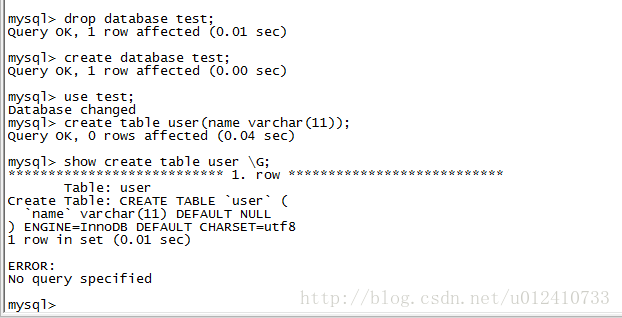
3. Summary
I see that many answers on the Internet are directly at the session level. Setting the character encoding of MySQL is a temporary solution rather than a permanent solution. We still need to solve this problem from the source. That is to modify the default configuration file of mysql and change its character set to UTF8 that can use Chinese characters.
The above is the detailed content of Detailed explanation of database MySQL Chinese garbled solution summary (pictures and texts). For more information, please follow other related articles on the PHP Chinese website!

Hot AI Tools

Undresser.AI Undress
AI-powered app for creating realistic nude photos

AI Clothes Remover
Online AI tool for removing clothes from photos.

Undress AI Tool
Undress images for free

Clothoff.io
AI clothes remover

Video Face Swap
Swap faces in any video effortlessly with our completely free AI face swap tool!

Hot Article

Hot Tools

Notepad++7.3.1
Easy-to-use and free code editor

SublimeText3 Chinese version
Chinese version, very easy to use

Zend Studio 13.0.1
Powerful PHP integrated development environment

Dreamweaver CS6
Visual web development tools

SublimeText3 Mac version
God-level code editing software (SublimeText3)

Hot Topics
 MySQL's Role: Databases in Web Applications
Apr 17, 2025 am 12:23 AM
MySQL's Role: Databases in Web Applications
Apr 17, 2025 am 12:23 AM
The main role of MySQL in web applications is to store and manage data. 1.MySQL efficiently processes user information, product catalogs, transaction records and other data. 2. Through SQL query, developers can extract information from the database to generate dynamic content. 3.MySQL works based on the client-server model to ensure acceptable query speed.
 Laravel Introduction Example
Apr 18, 2025 pm 12:45 PM
Laravel Introduction Example
Apr 18, 2025 pm 12:45 PM
Laravel is a PHP framework for easy building of web applications. It provides a range of powerful features including: Installation: Install the Laravel CLI globally with Composer and create applications in the project directory. Routing: Define the relationship between the URL and the handler in routes/web.php. View: Create a view in resources/views to render the application's interface. Database Integration: Provides out-of-the-box integration with databases such as MySQL and uses migration to create and modify tables. Model and Controller: The model represents the database entity and the controller processes HTTP requests.
 How to start mysql by docker
Apr 15, 2025 pm 12:09 PM
How to start mysql by docker
Apr 15, 2025 pm 12:09 PM
The process of starting MySQL in Docker consists of the following steps: Pull the MySQL image to create and start the container, set the root user password, and map the port verification connection Create the database and the user grants all permissions to the database
 Solve database connection problem: a practical case of using minii/db library
Apr 18, 2025 am 07:09 AM
Solve database connection problem: a practical case of using minii/db library
Apr 18, 2025 am 07:09 AM
I encountered a tricky problem when developing a small application: the need to quickly integrate a lightweight database operation library. After trying multiple libraries, I found that they either have too much functionality or are not very compatible. Eventually, I found minii/db, a simplified version based on Yii2 that solved my problem perfectly.
 How to install mysql in centos7
Apr 14, 2025 pm 08:30 PM
How to install mysql in centos7
Apr 14, 2025 pm 08:30 PM
The key to installing MySQL elegantly is to add the official MySQL repository. The specific steps are as follows: Download the MySQL official GPG key to prevent phishing attacks. Add MySQL repository file: rpm -Uvh https://dev.mysql.com/get/mysql80-community-release-el7-3.noarch.rpm Update yum repository cache: yum update installation MySQL: yum install mysql-server startup MySQL service: systemctl start mysqld set up booting
 Centos install mysql
Apr 14, 2025 pm 08:09 PM
Centos install mysql
Apr 14, 2025 pm 08:09 PM
Installing MySQL on CentOS involves the following steps: Adding the appropriate MySQL yum source. Execute the yum install mysql-server command to install the MySQL server. Use the mysql_secure_installation command to make security settings, such as setting the root user password. Customize the MySQL configuration file as needed. Tune MySQL parameters and optimize databases for performance.
 MySQL and phpMyAdmin: Core Features and Functions
Apr 22, 2025 am 12:12 AM
MySQL and phpMyAdmin: Core Features and Functions
Apr 22, 2025 am 12:12 AM
MySQL and phpMyAdmin are powerful database management tools. 1) MySQL is used to create databases and tables, and to execute DML and SQL queries. 2) phpMyAdmin provides an intuitive interface for database management, table structure management, data operations and user permission management.
 Laravel framework installation method
Apr 18, 2025 pm 12:54 PM
Laravel framework installation method
Apr 18, 2025 pm 12:54 PM
Article summary: This article provides detailed step-by-step instructions to guide readers on how to easily install the Laravel framework. Laravel is a powerful PHP framework that speeds up the development process of web applications. This tutorial covers the installation process from system requirements to configuring databases and setting up routing. By following these steps, readers can quickly and efficiently lay a solid foundation for their Laravel project.





